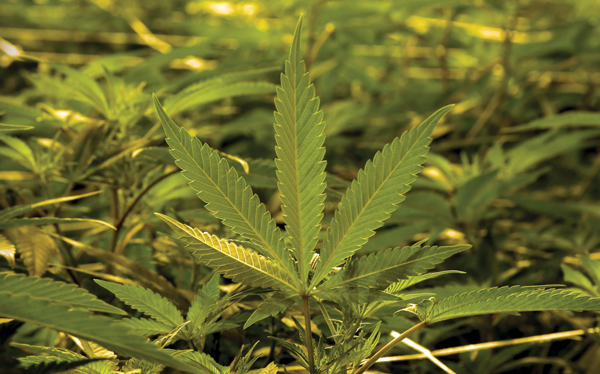 It could be a while before New York real estate truly goes green.
It could be a while before New York real estate truly goes green.
Last month, the state approved licenses for five medical cannabis providers — doubling the number of such companies operating in New York — and announced the drug would soon be available in pills, lozenges and ointments. Medical marijuana businesses in New York are expected to raise more than $40 million in capital this year, according to Scott Greiper, president and founding partner of the cannabis-focused firm Viridian Capital Advisors. Those companies already raised roughly $111.4 million from 2014 to 2016, he said.
But even as the state moves to expand its medical marijuana program, sources in the cannabis industry say lack of access to banking and real estate have become two of the biggest roadblocks to operating in New York.
“When applying for a license to grow and sell, you have to attach a facility to that license,” Greiper said. “You have to be able to have it all planned.”
And it’s not as simple as just lining up a warehouse or retail space. Lee Hopcraft, a business developer for Green Rush Consulting, a California-based firm that helps new cannabis companies file for cultivation licenses across the country, said New York State has some of the most stringent laws he has seen so far.
Cannabis companies must provide extra paperwork to the state confirming their landlord is aware that medical marijuana is being harvested or sold, he said. And Kris Krane, the president of cannabis advisory firm 4Front Ventures, noted that such companies are restricted from being within 1,000 feet of day care centers, schools, churches or “anywhere children can gather.”
It’s also more costly to apply for a license in New York than other places: Companies have to pay a $10,000 nonrefundable fee and a $200,000 registration fee to the state, according to the New York State Department of Health. If a company is not granted a license, the $200,000 fee is refunded. Meanwhile, a licensing fee in Oregon is $4,000.
When Gov. Andrew Cuomo legalized medical marijuana usage by signing the Compassion Care Act in 2014, more than 40 companies applied for licenses that would entitle them to one cultivation site and four dispensaries. Only five firms received them at the time — four of which operate dispensaries in New York City (Columbia Care NY, Etain Health, PharmaCannis and Vireo Health of New York), according to the state Department of Health’s Medical Marijuana Program.
Jeremy Unruh, general counsel for PharmaCannis, said that while snagging a New York license is pricier, other states don’t usually give a company “that large of a footprint.”
“Licenses in other states may be only for a retail dispensary or a single cultivation center,” he said. “Accordingly, the capital needed is usually less.”
But the extra restrictions in New York still make finding real estate for a cultivation site and dispensary challenging, Unruh said.
“It’s unique to the industry,” he said. “What would usually be 10 hours of research for a lawyer becomes 15 to 20 hours for us, and brokers have to find a place that fits. It makes the bill higher.”

The reception area at Columbia Care, a medical marijuana dispensary in New York
In December 2016, PharmaCannis sold its newly built 127,000-square-foot growing facility in Montgomery, New York, to real estate investment trust Innovative Industrial Properties for $30 million. In turn, the REIT leased the space back to PharmaCannis on a 15-year term for roughly $300,000 a month in rent, along with a more than $100,000 monthly property management fee.
Innovative Industrial Properties, a cannabis-focused REIT that filed to go public in October 2016, provides long-term triple net leases for medical marijuana growers.
“Well-qualified growers want to be in more than one state and typically don’t want to have capital stuck in their real estate — they need capital to expand into new markets,” said Paul Smithers, the company’s CEO. “We come in and free that capital up for expansion.”
Smithers noted that the current restrictions in New York make it easier for him to ensure that the companies he works with abide by the law, making them a lower risk to his business.
While there are some ways to get a quick injection of capital, like PharmaCannis did, costly application fees and an even more complex and expensive hunt for real estate means cannabis providers need a lot of money upfront. Unruh said that to get a company off the ground, $30 million would be a “good start.”
“Since cannabis isn’t federally legal, it’s hard to get a loan from a bank, but new growers and sellers need that capital to get off the ground,” said Rick Kaplan, an event organizer who helped run the Cannabis in Commercial Real Estate conference in New York this past May.
The National Association of Cannabis Businesses, which launched in June, is trying to act as a self-regulatory body for the industry to make it easier for dispensaries and growers to gain access to banking, investment and property, said Douglas Fischer, the trade group’s chief legal officer.
Every year, the NACB will certify companies that follow certain rules — such as not advertising or selling to minors and not selling products that are banned in specific states — to act as a safeguard for potential lenders, investors and landlords.
“If there is an organization that can certify that a business is in good shape, it makes it easier for any company or anyone who wants to do business with a cannabis business,” Fischer said.
The NACB is developing a subscription-based platform that will track sales and inventory and highlight any suspicious activity. The hope is to put potential business partners, investors and landlords at ease when working with cannabis companies by having an audit trail in place.
But even as the industry moves to self-regulate, it has a ways to go before it becomes profitable to the state. Krane suggested that New York allow for 10 dispensaries per license, rather than the current four. “The [state] needs to increase access,” he said.
He also said that while it was good to see the state dole out five more licenses last month, it’s “nowhere near enough to serve a population of 20 million people. I suspect as the patient population grows, they will need to add more licenses.”
Hopcraft of Green Rush said that if New York doesn’t take steps to up the number of dispensaries and cultivation sites, the cannabis industry will remain exclusive, with fewer companies contributing to the state’s coffers.
“We’re making the industry up as we go,” he said. “It’s a game that hasn’t been played before here.”